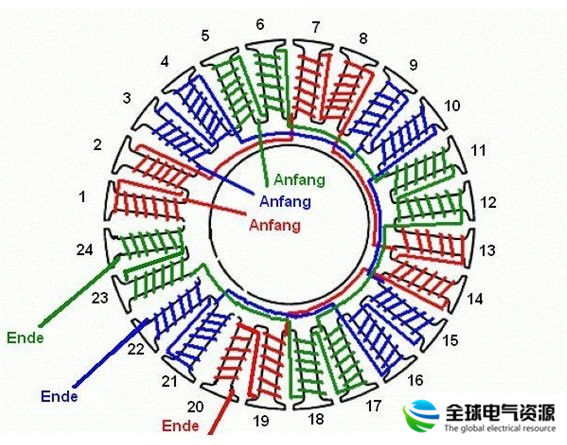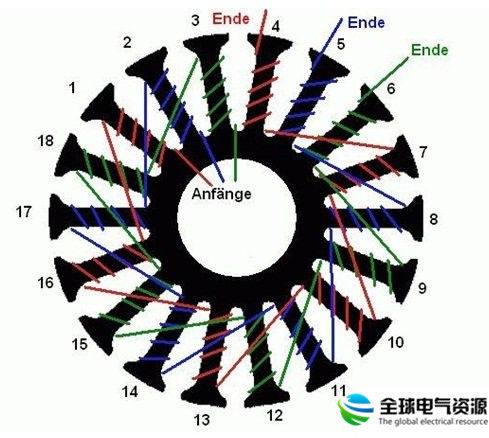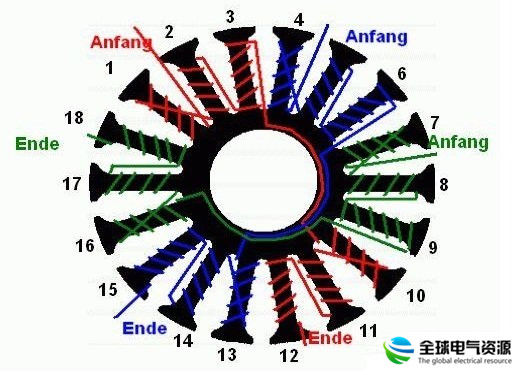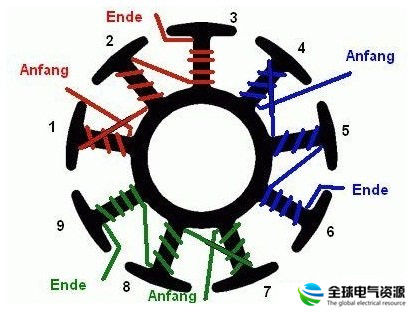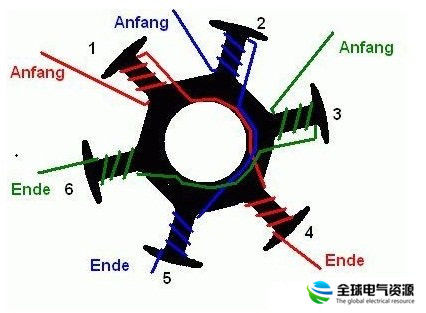The structure of the motor winding is mainly divided into the following types:
First, the stator windings form the magnetic pole to distinguish
The stator winding can be divided into two types, the pole type and the drain type, according to the relationship between the number of magnetic poles of the motor and the distribution of the actual magnetic poles.
1. Pole-type winding
In the galvanic winding, each (group) of coils forms a magnetic pole, and the number of coils (groups) of the windings is equal to the number of magnetic poles.
In the galvanic winding, in order to make the polarities N and S of the magnetic poles mutually spaced, the current directions in the adjacent two coils (groups) must be opposite, that is, the connection manner of the adjacent two coils (groups) must be the end At the end, the head end is connected to the head end (the terminology of the electrician is "tail tail, head joint"), that is, reverse connection.
2. Bipolar winding
In the 式-type winding, each (group) of coils forms two magnetic poles, and the number of coils (groups) of the windings is half of the number of magnetic poles because the other half of the magnetic poles are formed by the magnetic lines of force of the magnetic poles generated by the coils (sets).
In the buck-type winding, the polarity of the magnetic poles formed by each coil (group) is the same, so the current directions in all coils (groups) are the same, that is, the connection mode of two adjacent coils (groups) should be The tail end is connected to the head end (the term "tail joint" in the electrician), that is, the serial connection.
Second, the shape of the stator winding and the embedded wiring
According to the shape of the coil winding and the way of the embedded wiring, the stator winding can be divided into two types: centralized and distributed.
Centralized winding
Centralized windings typically consist of only one or a few rectangular frame coils. After being wound, the yarn is wrapped and shaped, and then dried by dipping paint and then embedded on the core of the convex magnetic pole. Such windings are used for DC motors, excitation coils for general-purpose motors, and main pole windings for single-phase shaded-pole motors.
2. Distributed winding
The stator of the motor with distributed winding has no convex poles, and each pole is composed of one or several coils and the wiring is formed according to a certain rule. According to the form of the embedded wiring arrangement, the distributed winding can be divided into two types: concentric type and stacked type.
(1) Concentric windings Concentric windings are rectangular coils of different sizes and sizes of the same coil group, which are arranged in a zigzag pattern one by one according to the position of the same center. Concentric windings are divided into single layers and multiple layers. The stator windings of a single motor and a part of a small power three-phase asynchronous motor are generally of this type.
(2) Stacked windings The stacked windings are all of the same shape and shape of all coils (except for single and double circles), with one coil side embedded in each slot and one-to-one uniformly distributed at the outer end of the slot. The stacked windings are divided into a single layer stacking method and a double layer stacking type. In each slot, only one coil side is embedded as a single-layer stack winding, or a single-stack winding; each slot is embedded with two coil sides belonging to different coil groups (sub-layer), which is a double-layer winding, or double Stacked windings. Due to the different variations of the embedded wiring, the stacked windings have a single-double-circle cross-wiring arrangement and a single-layer hybrid wiring arrangement; in addition, the embedded shape from the winding end is called a chain winding, a basket-shaped winding, In fact, they are all stacked windings. Generally, the stator windings of three-phase asynchronous motors use stacked windings.
Third, the rotor winding
The rotor windings are basically divided into two types: squirrel cage type and winding type. The squirrel-cage structure is relatively simple, the windings used to be copper-inlaid strips, most of which are currently cast aluminum, and the special double squirrel-cage rotor has two sets of squirrel cages. The wound rotor winding is identical to the stator winding and is also split and another type of winding. The shape of the wave winding is similar to that of the stacked winding, but the wiring is different. The basic component is not the whole coil, but a single-turn unit coil, which needs to be welded into a coil group one by one after being embedded. Waveform windings are generally used for rotor windings of large AC motors or armature windings of medium and large DC motors.
Fourth, various stator winding methods
